I made 12 million in the last bull market.
Born in 1995, graduated from university in 2018, started working in Shenzhen, and entered the cryptocurrency market in early 2015.
I own a house and a car in Shenzhen, with no luxury spending, and most of my assets are in exchanges.
I previously worked in e-commerce in Shenzhen, with a monthly income of 20,000 to 30,000 RMB, and monthly expenses of over 10,000, saving a couple of thousand each month. Like many 'migrant workers' in Shenzhen, I also wanted to buy a house there.
However, at this income level, saving for a down payment feels like waiting for a long time. There are bottlenecks in job income, and salaries are hard to increase.
It wasn't until I got into the cryptocurrency world that I realized I could use the leverage of virtual currencies to multiply my assets!
In the last bull market, I put most of my savings into digital currencies, heavily investing in ETH, some BTC, and a few miscellaneous altcoins.
After several major pullbacks and over-leveraging midway, I haven’t operated much. During the 519 crash, I didn't run but added positions in some promising altcoins.
Until November 2021, Bitcoin broke its historical high of $69,000. At that time, market sentiment was very high, and many people believed it would break $100,000, but in fact, $69,000 was the peak of this bull market.
By the end of November, I saw the overall trend weakening, deducing that the bull market was likely over, so I cleared most of my positions. At that time, Bitcoin was around 58,000, and Ethereum was around 4,400.
It has been proven that this is a very wise choice, while some retail investors with 'bullish fantasies' shouting 'eternal bullish markets' and clinging to 'tail-end markets' have now been left stuck in losses.
After the bull market in 2021 ended, my capital account had about 12 million RMB.
I put out 4 million for a down payment to buy a house in Shenzhen (after graduating, I transferred my household registration to Shenzhen; after three years of social insurance, I was qualified to purchase a house), withdrew 2 million for daily use, and left the remaining 6 million in the exchange.
To summarize my advantages:
Relatively large principal with a continuous cash flow supplement.
Suitable entry timing and buying/selling points.
Only trade when there is high certainty and reduce trading frequency.
The cryptocurrency market earns money through cycles; entry timing, entry and exit points, project selection, position allocation, and principal are all factors that will affect your profitability.
If you truly plan not to leave the cryptocurrency circle for the next three years and aim to make it your primary profession, please remember the following 10 operational insights. After reading, you will thank me!
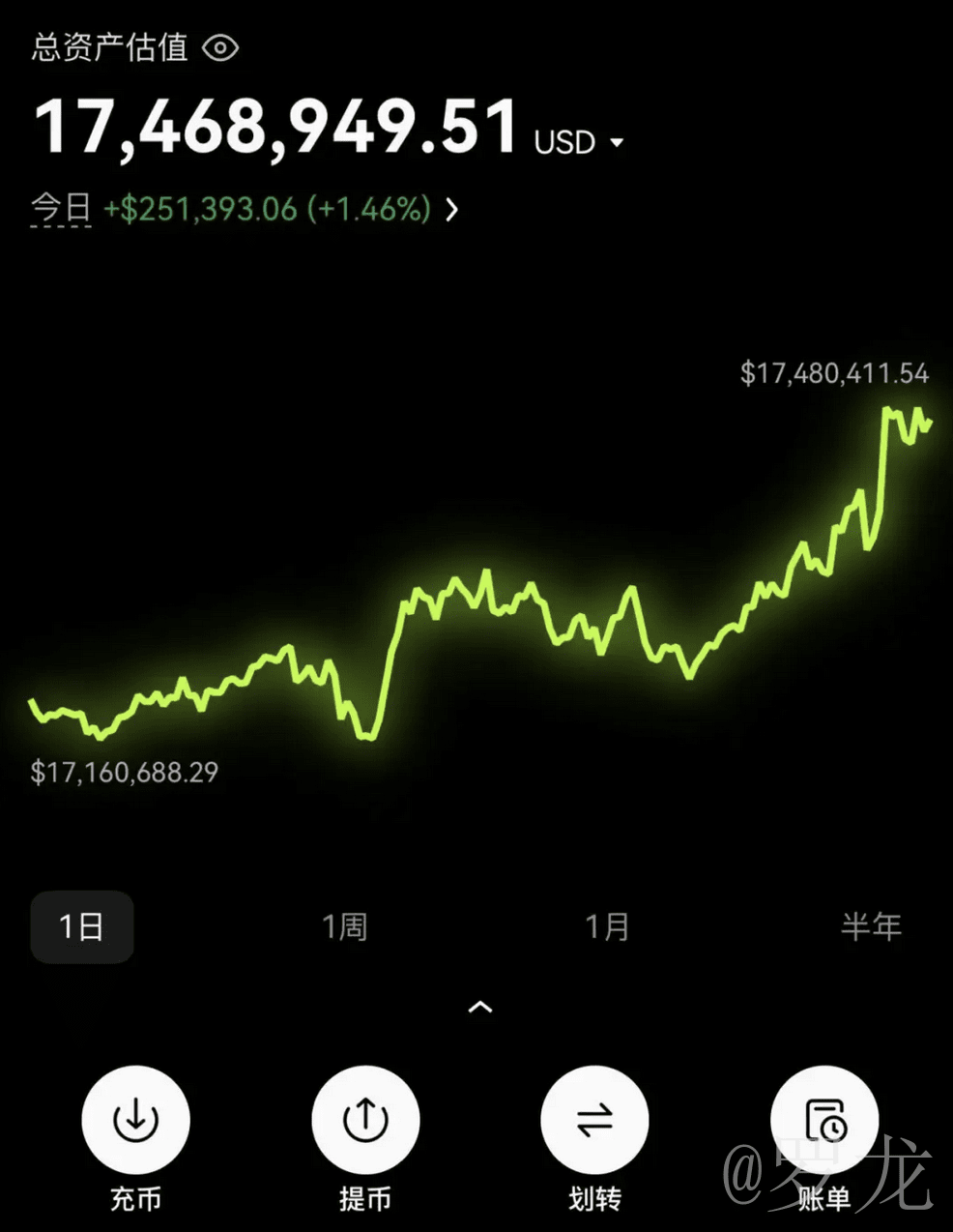
Continue trading cryptocurrency like this! Earning a million is achievable.
1. Work hard for two months to increase the principal to around 10,000.
2. Buy coins when Bitcoin's weekly price is above MA20, buy two to three coins, and they must be new coins, hot coins in a bear market, like APT before its rise. As long as Bitcoin rises a bit, it can take off, like OP. Just remember, it needs to have heat and a story to tell.
3. If Bitcoin drops below MA20, stop loss; continue to earn during the buying or waiting period, giving yourself two to three chances to fail. If you have 20,000 in savings, invest 10,000; you can afford to fail three times.
4. If you bought a coin like APT, sell it when it reaches about 4-5 times. Continuously execute strategies; remember you are small capital and must buy new coins. Do not buy ETH or BTC; their gains cannot support your dreams.
5. If you can achieve three times a 5x return from the start of a bear market to a bull market, that's about 125 times. This period can range from as short as one year to as long as three years. You have three opportunities to fail; if you fail all three times, it indicates that you lack this ability, and you should stay away from this circle, avoid investing, and definitely avoid contracts. In short, remember to enter when it's time to enter and stop loss when it's time to stop loss; you must have patience.
6. Trading involves both losses and gains as a norm; do not be affected by temporary profits or losses. With a calm mind, you can discern even the slightest details!
My personal account has fluctuated from 300,000 to 1,000,000 over nearly 10 years, but upon reaching 1,000,000, it seemed to unlock, directly soaring to 40,000,000. I summarized 12 iron laws; the words are brief but very real. If you plan to play in the cryptocurrency market for the long term, this article is worth reading carefully, and you will have an enlightenment after reading it!
1. When trading cryptocurrencies, only trade strong coins and only look at coins in an uptrend. Do not consider coins in a downtrend, as we do not have time to waste with the main forces. If a coin is consistently above the trend line, then hold it patiently. For instance, Artificial Intelligence at the beginning of the year, as long as it doesn't break below the 30-day moving average, hold until it breaks.
2. Look at the main trend method + when the market trend is positive, there will definitely be a main direction. If this main direction is weak or simply doesn't exist, it indicates that the recent market risk is greater than the opportunity, and you should patiently wait for the appearance of the main direction without blindly operating.
3. Do not put all your eggs in one basket. The same applies to trading coins; do not invest all in one coin. Even if you are very optimistic, you should learn to diversify your holdings, and do not hold more than 4 coins.
4. Don’t always think about buying and selling coins. If you don’t operate for a day, you feel uncomfortable. Frequent trading can bring quick pleasure but will result in significant losses; the only one benefiting is the broker. If you lack the skills for short and frequent trading, you are not the market maker.
5. After a significant loss, you need to rest; after a big profit, you need to rest even more. From a psychological perspective, after a huge loss, your mentality will be affected; it’s hard to remain objective. At this point, you should understand your revenge trading psychology, which is detrimental to a gambler. After a big profit, emotions peak, making it easy to lose the cautious mindset, so after a big gain, it often results in a big loss.
6. Diversified operations; do not buy a coin heavily all at once, even if you are optimistic. Subsequent validation of your view does not mean you should do so, as no one knows what will happen tomorrow!
7. Many retail investors often stare at the minute chart all day long. In fact, doing so not only doesn't help but also disrupts your trading mentality. Trading cryptocurrency also requires a balance of work and rest; spending an hour a day reviewing trades is actually sufficient.
8. Careful contemplation before trading must surpass impulsive decisions during trading. In cryptocurrency operations, there is a saying: bold assumptions, cautious verification. Through post-trade reviews and pre-trade planning, we gain a clear understanding of the current hot market direction, which allows us to have a preemptive judgment about current trades. But remember, this pre-judgment does not equate to prediction; blind predictions replace the market's choices with one's own subjectivity, which is a major taboo in trading.
9. Better to miss a trading opportunity than to incur a loss. In the trading market, opportunities will definitely knock twice. Recognize and neutralize the fear of success; focus on the benefits of success rather than the pressure.
10. Traders often ask me a question: how to improve trading skills? The simplest way is to keep a trading log, recording all relevant information and experiences. Without a trading log, many valuable experiences will be wasted, and you may repeat mistakes. In this regard, a trading log is a tool for capital and risk management. Understanding the issues in trading is essential to solving them. Therefore, set keeping a trading log as one of your goals.
11. Grasp market trends; in actual operations, there are predictions, trial and error, confirmations, corrections, and adding positions. The theoretical loss from trial and error should be far less than the theoretical increase. If the trial and error results differ significantly from your expected outcome, you should decisively exit.
12. Reflect and summarize every trade, bravely face your account and delivery notes. Probability will tell you what to do next.
If you cannot overcome psychological barriers, no amount of failure can convert into experience.
Let me share a set of my practical strategies that have achieved an average win rate of 80%, a remarkable achievement in the cryptocurrency trading circle.
I have organized the essence of the K-line trading method; as long as you master it, trading with this method can guarantee a 30-fold account increase. Today I specifically organized this valuable information to share with those destined to receive it; make sure to keep it well.
In the cryptocurrency world, K-line is essential knowledge; it is the foundation of all technical analysis. Learning to read K-line charts is crucial for grasping cryptocurrency trends.
Five high-probability MACD patterns.
1. The first golden cross above the zero axis, the first death cross below the zero axis.
Use it on the hourly chart. Only operate on the first golden cross above the zero axis; only operate on the first death cross below the zero axis. Enter based on the pattern from the previous smaller timeframe. If the hourly MACD candlestick does not expand but shrinks, pay attention to the patterns in the 30-minute timeframe. Check the patterns for closing, and stop losses are also based on patterns. Generally, entering such patterns means you will earn; if you enter and have major pullbacks, if you enter...
If a retracement leads to a 30-minute exhaustion or death cross, then stop loss and exit. Otherwise, hold the position; the hourly wave can at least have a 100-point market. Special patterns during volatile periods can lower profits, which you can manage yourself.
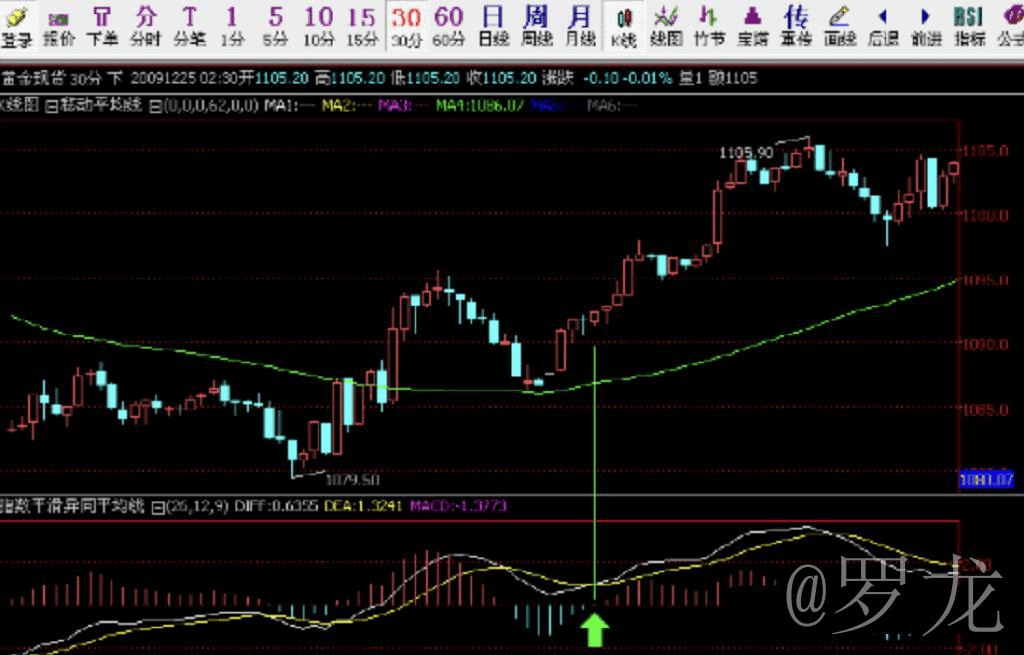
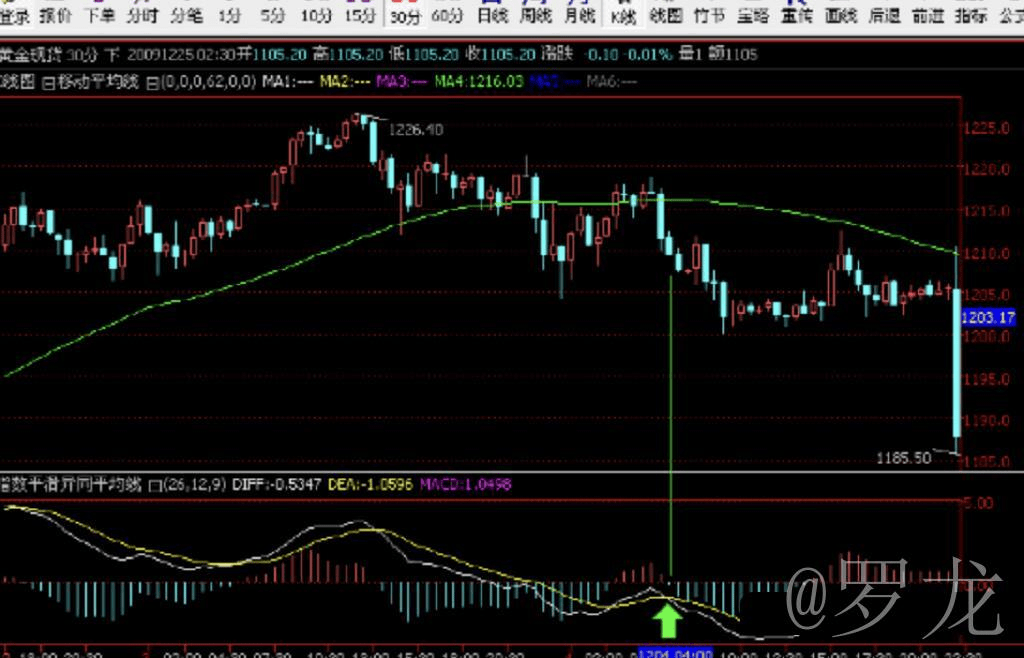
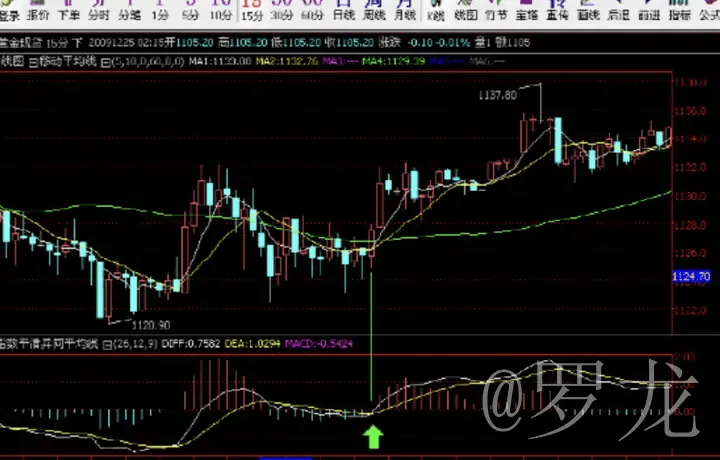
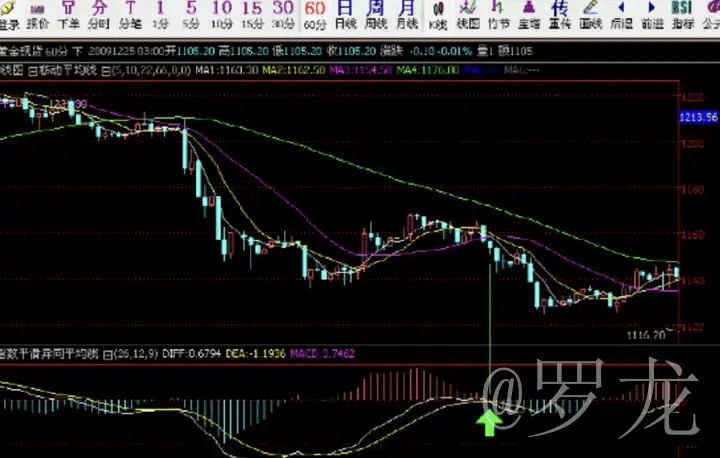
2. Divergence and Buddha's hand.
Divergence plus Buddha's hand is also a classic operation signal, as shown below.
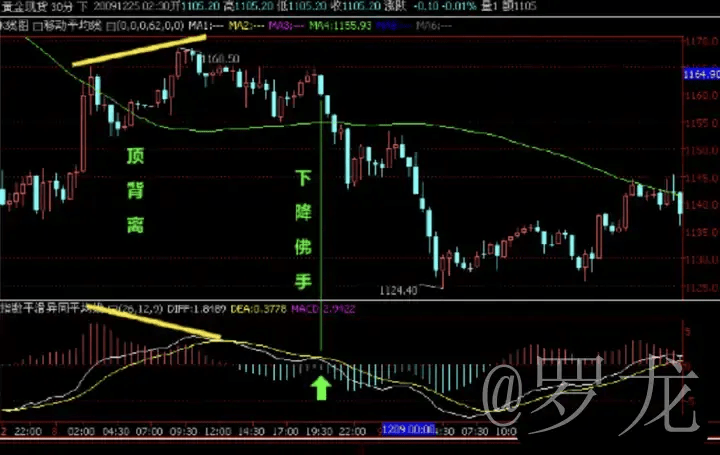
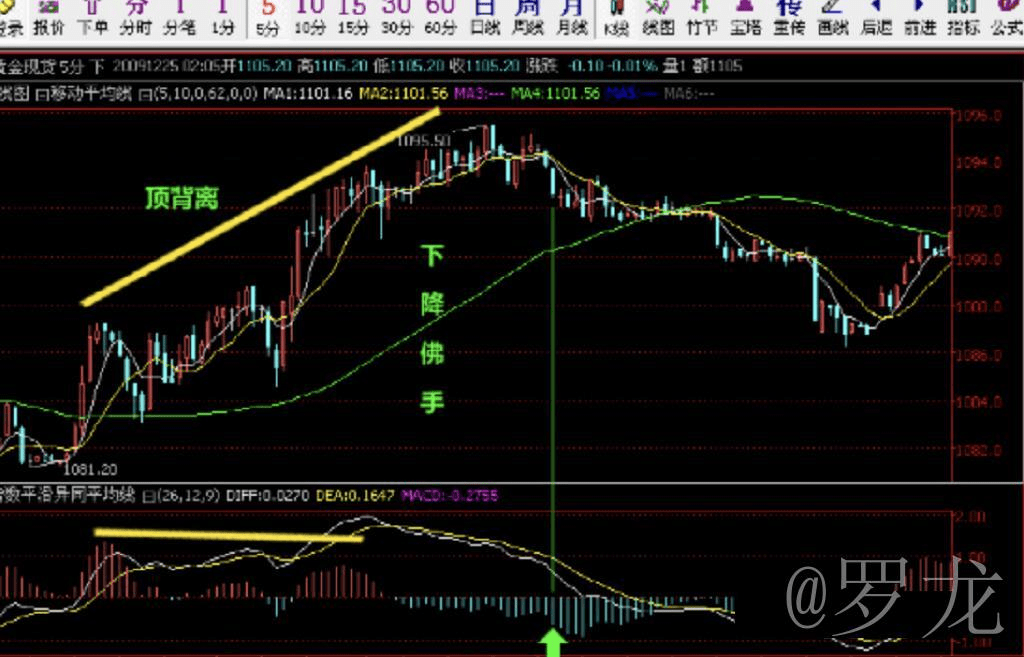
3. Dragonfly Doji.
1. Look for 1-2 different candlesticks among the red and green ones. Then continue in the previous direction of the candlesticks.
2. Ideally, it should be 1 to 3 candlesticks.
3. This pattern is used for rebound bottom fishing, with the stop loss set at the low point of the water pattern.
To increase trading opportunities, you can choose to make water patterns within 5 minutes. If you want to make larger swings, then create water patterns in 15 minutes. Set stop losses based on the current market conditions and your personal risk tolerance, usually based on the lowest point of the water pattern K-line.
The take-profit target generally breaks new highs with the trend, while against the trend, the first target is the previous high or low point, managed according to the situation.
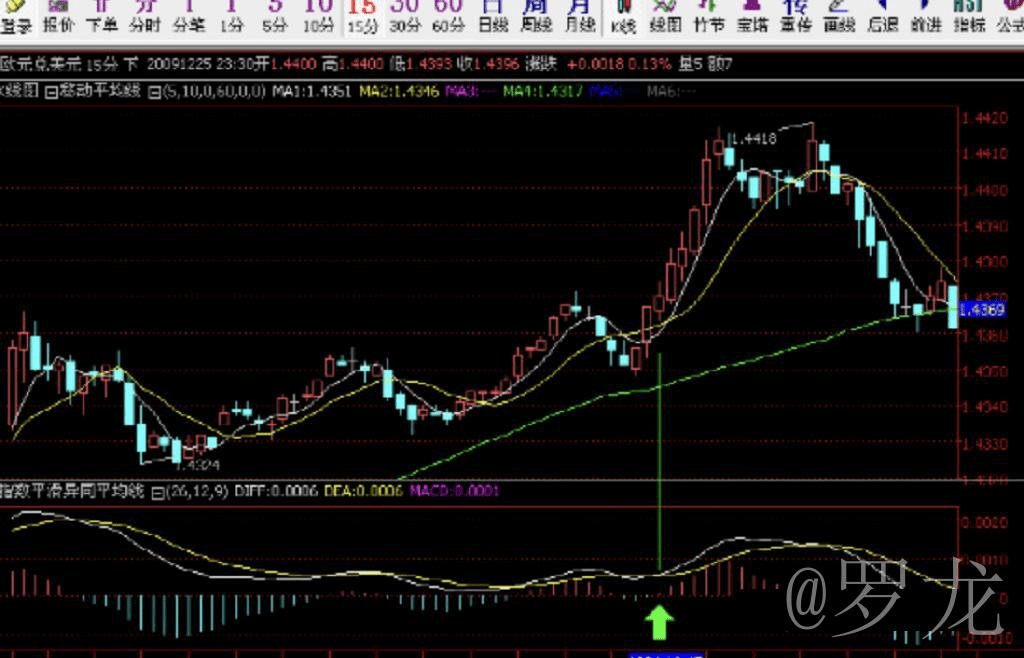
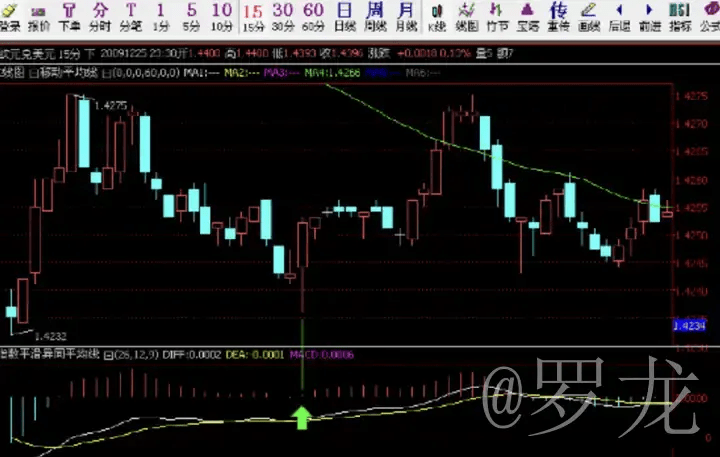
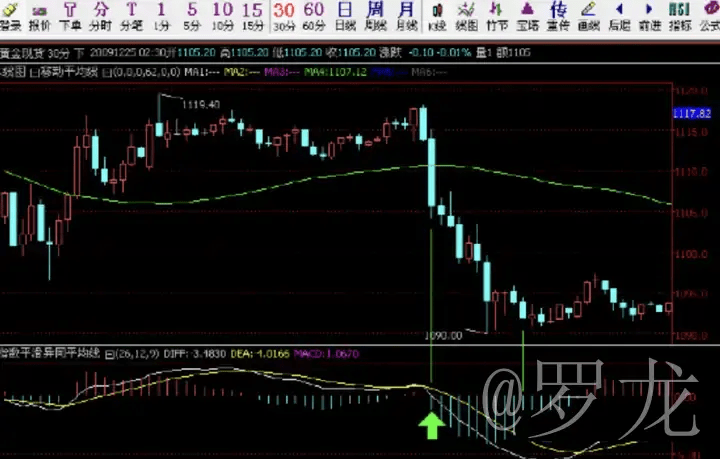
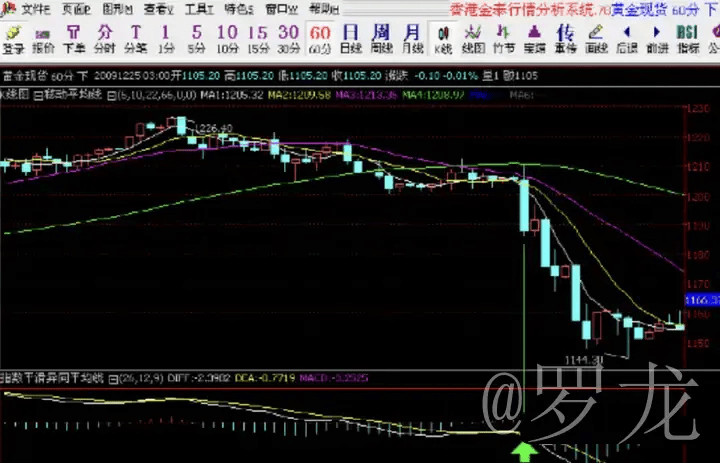
Four, Buddha's hand.
Buddha's hand pattern. When the MACD fast and slow lines cross at a high or low position but the market doesn't move in the opposite direction, instead, it moves along the previous direction or stays flat for a while, then the candlestick enlarges in the direction of the cross. The enlarging candlestick is a breakout signal, which is also our operational entry point. The close signal also refers to the candlestick detaching from the slow line as the main criterion.
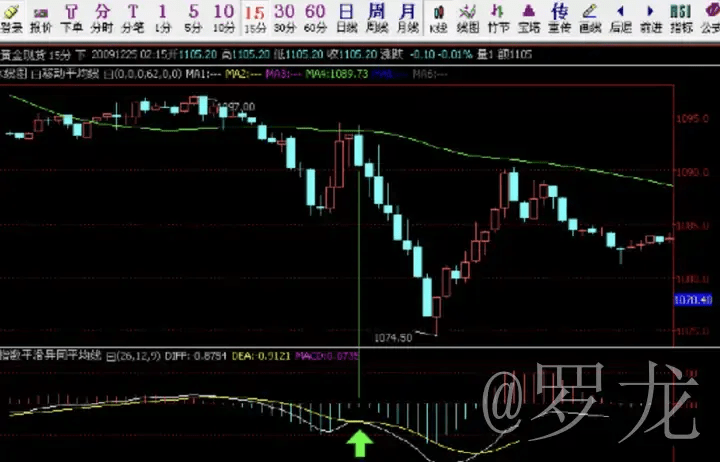
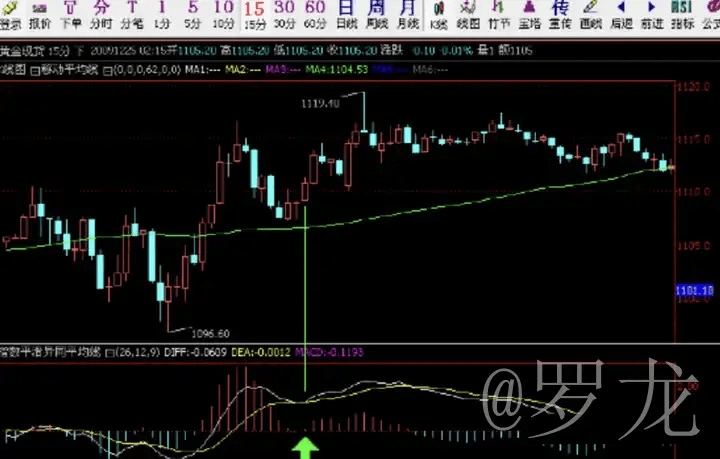
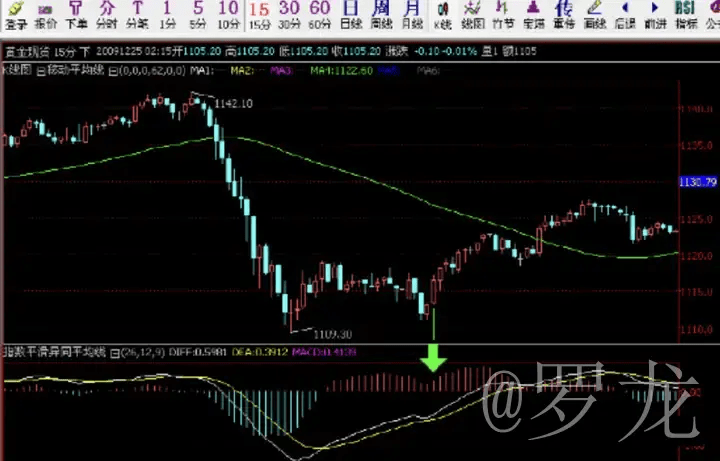
Five, cut off the head and tail.
1. The fast and slow lines must be close to the zero axis.
2. When the candlestick appears, it's best to start moving with the line at the first one.
Close signal:
◇ When the candlestick detaches from the fast line, it is the first signal.
◇ When the candlestick detaches from the slow line, it is a must to close the position signal.
The name comes from the fact that this pattern is operated after a market movement occurs. This is the head that is cut off. After closing, there is often still a market movement, which is the tail that is removed. Whenever you encounter this pattern, you must exit according to the closing signal.
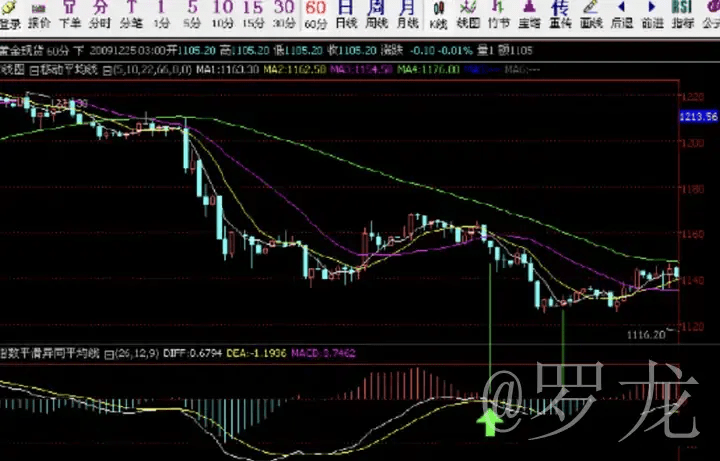
The only enemy on the road of cryptocurrency trading is yourself.
Investing is actually a high-threshold industry, but you only need a mobile phone/computer, a phone number, and an ID card to enter the CEX cryptocurrency trading market. However, this does not mean you will make money. The cryptocurrency market is ultimately composed of people, and human greed, anger, ignorance, sloth, and doubt are all vividly displayed here.
01 Regarding gambling and altcoins, playing altcoins is gambling; holding Bitcoin is the right path. This is a rather peculiar discourse in the current market, and dollar-cost averaging into Bitcoin is highly recommended by many big players. However, which of these big players' early success stories did not involve altcoins, even CX coins?
Listening to big players promoting dollar-cost averaging into Bitcoin and then starting on this path without understanding, is that not gambling?
Whether it's gambling or not is irrelevant to the coin type. The fundamental of a gambler's mentality is to ignore the current trend and operate based on their own greed, fear, and hopes. For many people, the cryptocurrency world is purely a big casino; in the A-share market, many also regard A-shares as a casino.
Viewing the market and the cryptocurrency world with this mindset means that such people do not need to be here at all; wouldn't it be better to enjoy yourself in Macau? Viewing the market through a gambler's eyes will inevitably lead to a tragic outcome. The moment you step into the market with a gambler's mentality (因), the web of karma has already pulled you in, and the miserable ending (果) has been predetermined. No matter how you act, it's a gamble for your life.
Returning to Bitcoin and altcoins, there are always people who belittle the altcoin community as worthless. Without the early altcoin Ethereum, could Bitcoin have achieved today’s success? Bitcoin, as a pioneer, and later altcoins have a symbiotic and complementary relationship, rather than a competitive one. Bitcoin itself cannot fully unleash the potential of blockchain; it needs altcoins to extend and expand. In comparison, for ordinary investors, high-quality altcoins are actually a better choice because they offer relatively higher odds.
However, one basic fact is that, in the long term, altcoins that can outperform Bitcoin are extremely rare. Of course, in any market and era, the ones who become legends will always be a small group.
02 Regarding contracts, technical analysis, and altcoins, contracts are also a dangerous beast. Futures contracts in the cryptocurrency world are basically equivalent to a casino.
I had no prior experience with contracts, and the external voices claimed that trading contracts was just giving away money, reporting various cases of total losses, leading to a huge misunderstanding of contracts. It wasn't until I started engaging with contracts earlier this year that I discovered they are a great tool.
The main criticism of contracts is liquidation, which only depends on the person. I only invest a small portion of my total principal in contracts, dividing the contract capital into 10 parts for operation, setting stop losses for each opening. Although I haven't made a profit, after playing hundreds of times, I haven't been liquidated to zero. Most people trade without a trading system; for instance, once a contrary trend appears, there is no stop loss mechanism at all. Instead, they fantasize that a reversal will happen immediately. If you don't get liquidated, who will?
Contracts, as a tool, are neither good nor bad; it depends on the user.
Because I got into contracts, I had to get into technical analysis. Like everyone else, I previously thought technical analysis was nonsense and merely hindsight. However, until I got involved, I found out it wasn't like that. Technical analysis isn't about making predictions; that would be nonsense.
The essence of technical analysis: technical analysis is actually a translator; there are too many factors influencing coin prices in the market, and you don't know which factor has the greatest weight. However, all causes will form a certain result, which is the price. Technical analysis describes what has happened in the market through price; this is the value of technical analysis, a language that people can understand.
The biggest change that technical analysis brought me was knowing how to avoid risks. For example, I recently bought an IEO.
The cryptocurrency's increase approached 8 times. In the past, I either sold halfway out of fear of heights and lost a lot of profits later, or held on after experiencing the peak and got trapped. Now this currency has already dropped by half. This time I used a simple long-short moving average system and found that this currency has shifted from a bullish market to a bearish market in a larger timeframe, with significant downside risk. I sold in time and preserved most of my profits.
People are easily influenced by external voices, rejecting or liking things they have never understood. This is a problem and must be changed.
03 On greed and fear: delight in objects and sorrow for oneself. If the price rises, it's a revolution; if it falls, it's a scam. Emotions are always the biggest obstacle on your investment journey as they disrupt all your plans. In fact, many people have trading plans; they sell promptly when their planned selling point appears and buy when their buying point appears. But with the addition of emotions, the result often goes against their intentions.
For example, during the 312 crash, many people said that their trading system had already shown sell signals before 312, but due to the market's frenzy and endless expectations for Bitcoin's halving, they didn't want to miss out on the big market. Greed took over completely, and 312 was the biggest retribution, turning infinite joy and expectation into infinite sorrow.
No trend is worth fearing or being surprised by. If you still feel fear or surprise towards any trend, it indicates that you are still controlled by emotions, and you should continue to refine in the current trend until all fears and surprises turn to ashes.
How to eliminate greed and fear? One of the most common methods is to be constantly tested in the market. Here I have a better and more convenient method - the Zen koan.
I consider myself a half-hearted Zen enthusiast, meditating daily on the koan 'Who is chanting the Buddha's name,' while questioning and pondering who is actually chanting. This is the essence of the koan method, which can be applied to various thoughts, such as 'Who is initiating the greedy mind,' and then trace it back down. You will quickly have a question about where this thought originated. In fact, at this point, the current greed will have already dissipated.
The same logic applies: 'Who is in fear?' 'Who is happy?' etc.
04 In summary, people are easily disturbed by external factors and may inexplicably reject or like something they have never understood. Emotionally, they are easily influenced by the fluctuations of K-lines, while the true voice of the market is always in the present moment.
Investing is very similar to cultivation, honing one's character through various methods and uncovering the truth through layers of fog. Investing is a form of cultivation, and on the path of cultivation, your only enemy is yourself.